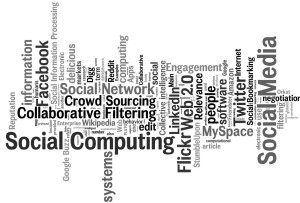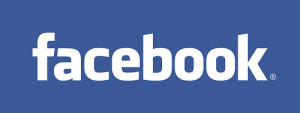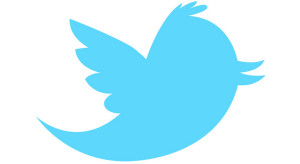Service that dominates our lives. Build for joy of small group of people and later spread to billions of users all around the world. Whatsapp, Facebook, Instagram and this is just a grain of sand from the total number of social network providers.
In 21st century social networks are dominant part for majority of us and for people all around the world. There is a huge spectrum of social networks since it became a common thing in people’s lives. Image sharing, video sharing, collaborating, blogging social networks are just excerpt of social networks that exist on market. This blog will examine social networks in general and then will focus especially on Facebook, Twitter and Instagram.
Social network can be defined in many ways but the basic and general definition is “social network is an online service or site through which people create and maintain interpersonal relationships” (Social Network). This means that social networks must consist at least from two different actors, such as person or company, that interact together.

By Daniel Iversen (Attribution 2.0 Generic (CC BY 2.0))
Huge proportion of history of social media and networks is compressed to the last decades since when the majority of today’s “giant” social networks started. But the first signs of social networks are linked with the 20th century. According to Bennett, the first origin of social networks as we know it today is in 1979, when the first internet service that allowed exchange of emails was established. This evoked networking revolution and led to big expansion of many different kinds of social networks.
Facebook, Twitter were published in the beginning of 21st century, exactly in years 2004 and 2005 (Bennett). Since then their popularity rapidly increased and their number of users is still growing. In October 2010 Instagram was launched and immediately it was classified as one of the most used social networks.

By Marco Paköeningrat (Attribution-ShareAlike 2.0 Generic (CC BY-SA 2.0))
Facebook was firstly connected to connect students of Harvard University where its founder Mark Zuckerberg studied. Due to its popularity in 2007 Facebook became open to public and started to make profit from advertising revenue and Facebook had about 30 million worldwide users (Phillips). In 2015 Facebook had over 350 million active users (with inactive it makes around 1 billion). “More than 35 million users update their status each day.” (Facebook Statistics). The basic principle of this social network is that people chat between each other and share things that happened in their lives, it can be throw so called status, photo or video. It offers many more applications such as games, events, gifts and much more.

By Kooroshication (Attribution 2.0 Generic (CC BY 2.0))
Twitter is social network that allows users to read or make 140 characters long posts so called tweets (MacArthur). In these tweets people can share their thoughts, ideas, reflections, etc. Moreover Twitter allows users to share videos or photos. With new upgrade application allows chatting between two sides. Twitter is well know for hashtags, hashtags is word that starts with „#“ that is used for labeling of tweets, articles, pictures and other types of media (Definition of Hashtag). In 2011, Twitter had 100 millions of users and Twitter hosts roughly a billion tweets every five days and is still expanding (Taylor).

By José Moutinho (Attribution 2.0 Generic (CC BY 2.0))
The last but not least, Instagram. This application [social network] that is based on photo-sharing and has 400 millions of users. This makes it the 7th most used network worldwide (Global Social Networks). Basic principle is that users shares pictures or videos and write a short description to it with voluntary usage of hashtags. Other people can like this picture / video. In new version of Instagram users can send pictures directly to one person without sharing it “globally”. Moreover Instagram offers immediate photo editor that offers filters and other tools how to upgrade your pictures (Introducing Instagram).
Benefits of using social networks are very speculative because public mostly focuses on the bad sides of it. Networking and applications enables connections and communication.Social networks offers high-speed information transfer no matter how long the distance is. In other words, users are informed about the world within minutes.
One of the most discussed topics about social networks is privacy and data mining. Some networking sites may not protect your personal data, such as birth date, credit card number or messages in adequate way, but this is very speculative if it is problem of the provider that their security is not good enough or if just hackers are so powerful on the internet and the provider can’t do anything about it. Another issue, especially on Facebook, is new kind of bullying. 43% of teens aged 13 to 17 report that they have experienced some sort of cyberbullying in the past year (Cyberbullying Statistics). Cyberbullying can be defined as attacking, harassing, sending offensive emails or messages through electronic devices (What is cyberbullying). Social networks are doors for new options that might be useful as well as hurtful.
Personally, I see social networks as very useful not just for me but as well as humanity as whole. I seek after them because they give me some kind of pleasure. I pretty much like sharing my thoughts through Twitter, photos and experiences through Instagram. Lately I do not like Facebook at all, because I find it more annoying than satisfying. Moreover I use social networks to be in contact with people I want and sometimes to meet new strangers. Another reason of using my favorite applications is that I discover new things that are happening or that exist for example I can see how beautiful beaches on Maldives look like while I sit in Nová Karlina. Other social networks I use are for example Whatsapp, Snapchat, Youtube and Messenger.
In conclusion, due to a constant presence in the lives of users, social networks have a decidedly strong social impact. At the beginning the purpose of social networks was to connect users, but later this was misused by some people. Social networks are the future of communication among people and it is just up to humans how they use it.
Sources:
Bennett, Shea. „The History Of Social Networking Through The Ages [INFOGRAPHIC].“ SocialTimes. N.p., 2014. Web. 03 Jan. 2016.
Borges, Bernie. „40 Year History of Social Media | Social Marketing.“ Find and Convert RSS. N.p., 20 Feb. 2012. Web. 03 Jan. 2016.
„Cyberbullying Statistics.“ InternetSafety101.org: Statistics. N.p., n.d. Web. 03 Jan. 2016.
„Definition of Hashtag in English:.“ Hashtag. N.p., n.d. Web. 03 Jan. 2016.
„Global Social Networks by Users 2015 | Statistic.“ Statista. N.p., n.d. Web. 03 Jan. 2016.
„Introducing Instagram V2.0.“ Blog Instagram. Instagram, 2011. Web. 3 Jan. 2016.
Phillips, Srah. „A Brief History of Facebook.“ The Guardian. N.p., 2007. Web. 3 Jan. 2016.
„Social Network.“ Merriam-Webster. Merriam-Webster, n.d. Web. 03 Jan. 2016.
Taylor, Chris. „Twitter Has 100 Million Active Users.“ Mashable. N.p., 8 Sept. 2011. Web. 03 Jan. 2016.
„What Is Cyberbullying.“ What Is Cyberbullying. N.p., n.d. Web. 03 Jan. 2016.

